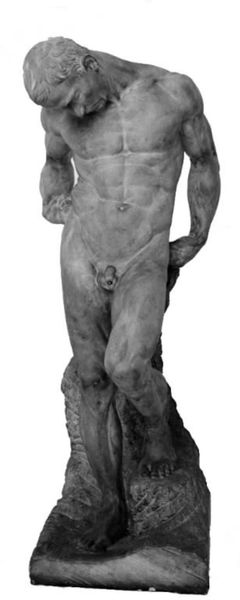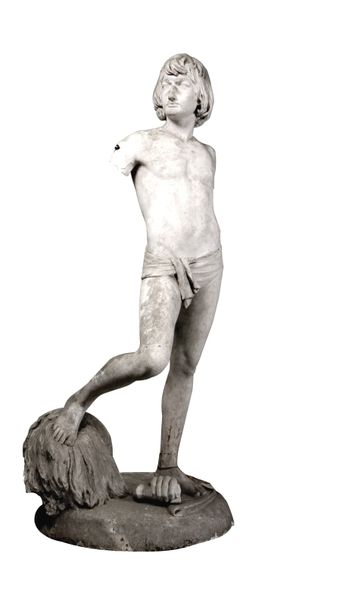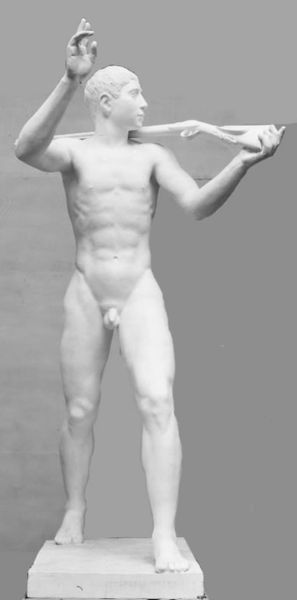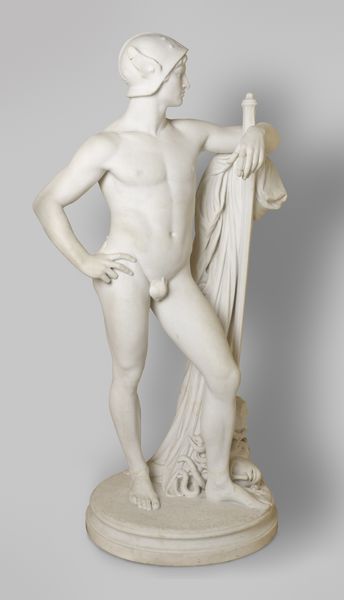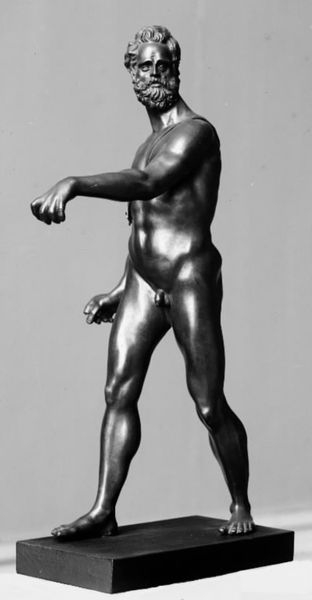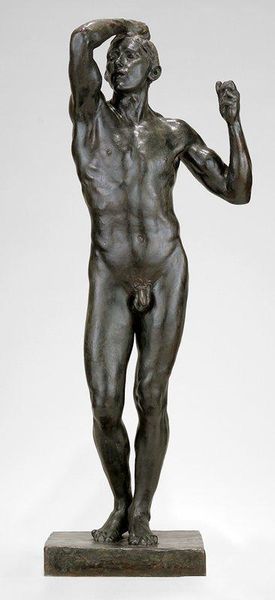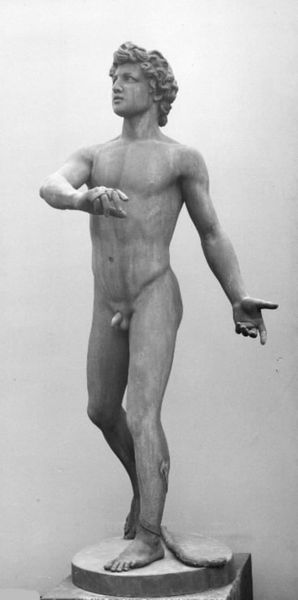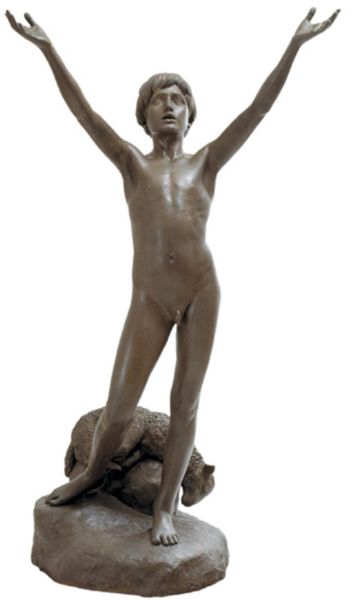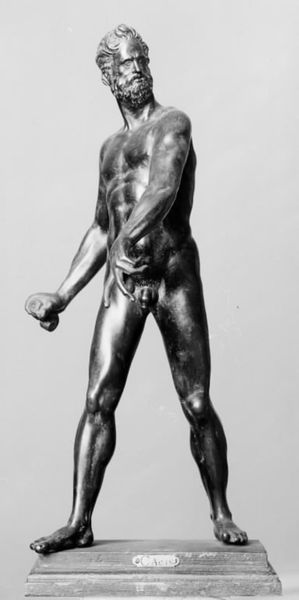
carving, sculpture, marble
#
carving
#
sculpture
#
greek-and-roman-art
#
classical-realism
#
figuration
#
form
#
sculpture
#
marble
#
nude
Dimensions: 191.3 cm (height) x 66 cm (width) x 57.5 cm (depth) (Netto), 525 kg (weight) (None)
Curator: This striking marble sculpture, carved by Louis Hasselriis in 1870, is titled "Before the Victory". It resides here at the SMK, the National Gallery of Denmark. Editor: My initial impression is one of serene strength, and quiet contemplation. There's a certain polished tension in the figure, from the carefully carved musculature to the positioning of his hands behind his back. Curator: Indeed. Hasselriis, deeply inspired by classical Greek and Roman sculpture, was attempting to tap into an artistic tradition heavily imbued with ideas of civic duty, and ideals of masculine strength as service to the state. The artist's production was very rooted in the rising nationalist sentiments that were felt across Europe at this moment in time. Editor: Looking at the sculpture formally, I notice how Hasselriis creates a dialogue between smoothness and texture. The skin is almost porcelain, whereas the draped cloth and roughly textured tree stump at his feet contrast sharply. And note the figure is rendered in full contrapposto. The head is turned away from the weight bearing leg – he’s a poised figure of perfect balance. Curator: Consider also, the symbolism embedded in the disc that the figure holds. This echoes classical depictions of athletes – figures lauded for their physical prowess and contributions to society through displays of sporting excellence. I'd argue that Hasselriis is making a subtle comment on the value that society places on particular displays of masculine power. Editor: And perhaps an acknowledgment of their inherent vulnerability. His hands are clasped behind his back. A disc offers meager protection. He looks pensively off to the side. The form expresses this vulnerability; despite the muscular physique, there is a fragility communicated through a masterful study of gesture. Curator: The late nineteenth century saw an explosion of neoclassical sculptures across Europe. I see Hasselriis’s sculpture as fitting very neatly within the tastes and demands of powerful state institutions and wealthy patrons seeking to reinforce classical values through public art. Editor: Yes, there's a compelling discussion to be had between the individual strength captured in the piece versus the institutional needs being fulfilled. A balance, perfectly articulated by Hasselriis’ deft hand and eye. Curator: A powerful statement indeed, rooted in the complex interplay between artistic form, political will, and the cultural milieu that birthed it.
Comments
No comments
Be the first to comment and join the conversation on the ultimate creative platform.
